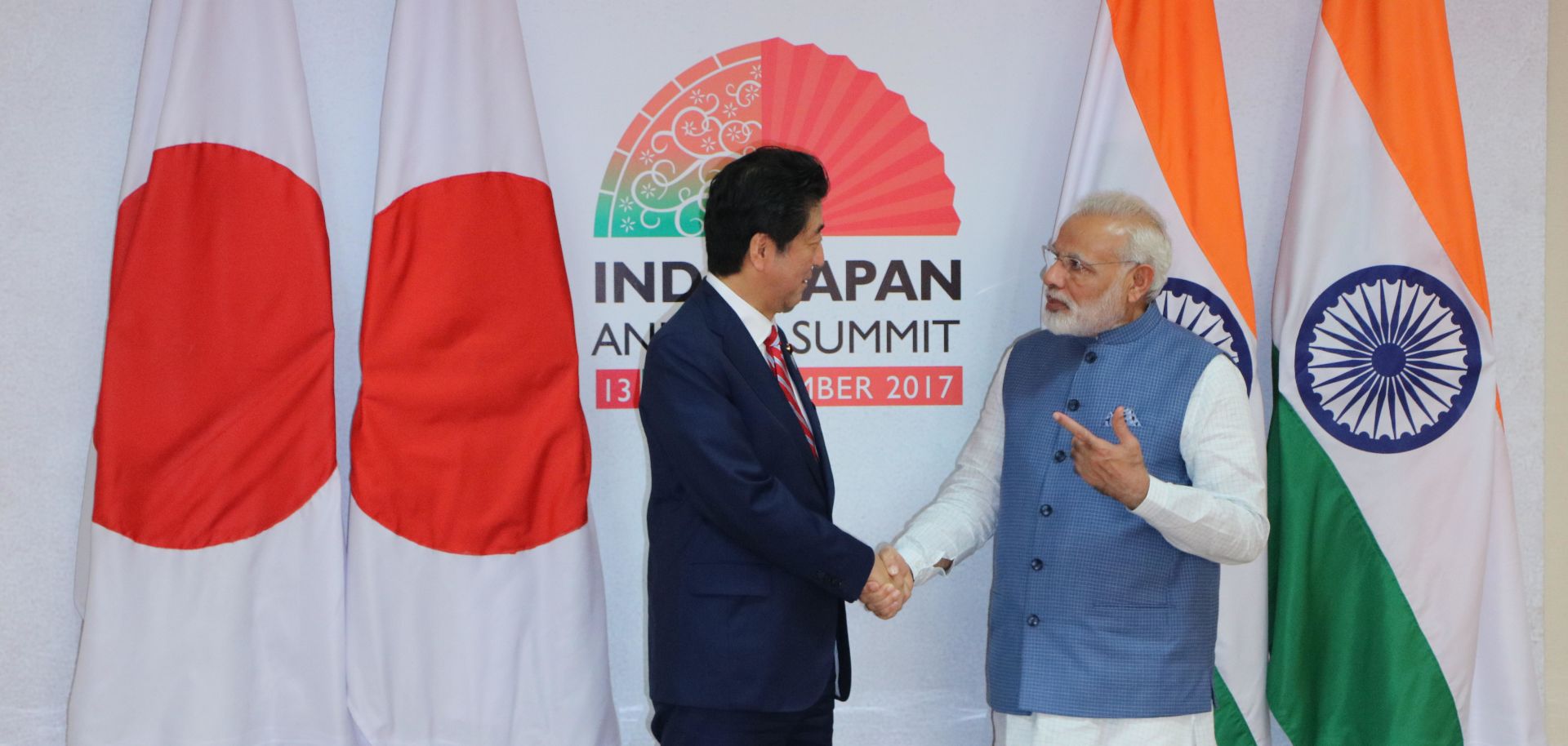ASSESSMENTS
With Act East, India Charts Its Ascent Into Southeast Asia

Jan 17, 2020 | 09:00 GMT

Indian Prime Minister Narendra Modi shakes hands with his Japanese counterpart, Shinzo Abe, during a summit in India. To counter China's rise, Modi's government has sought to bolster India's ties with Japan and other Asian countries as part of its "Act East" policy.
(SIDDHARAJ SOLANKI/Hindustan Times via Getty Images)
Highlights
- China’s expansion into India's neighborhood will continue to drive India’s own outreach in Southeast Asia and the wider Indo-Pacific.
- To strengthen India's territorial unity against Chinese threats, New Delhi is also ramping up development in the country's northeast region.
- Boosting trade with Southeast Asian states, however, will partially depend on whether India can negotiate a favorable trade pact under the Regional Comprehensive Economic Partnership.
Subscribe Now
SubscribeAlready have an account?
